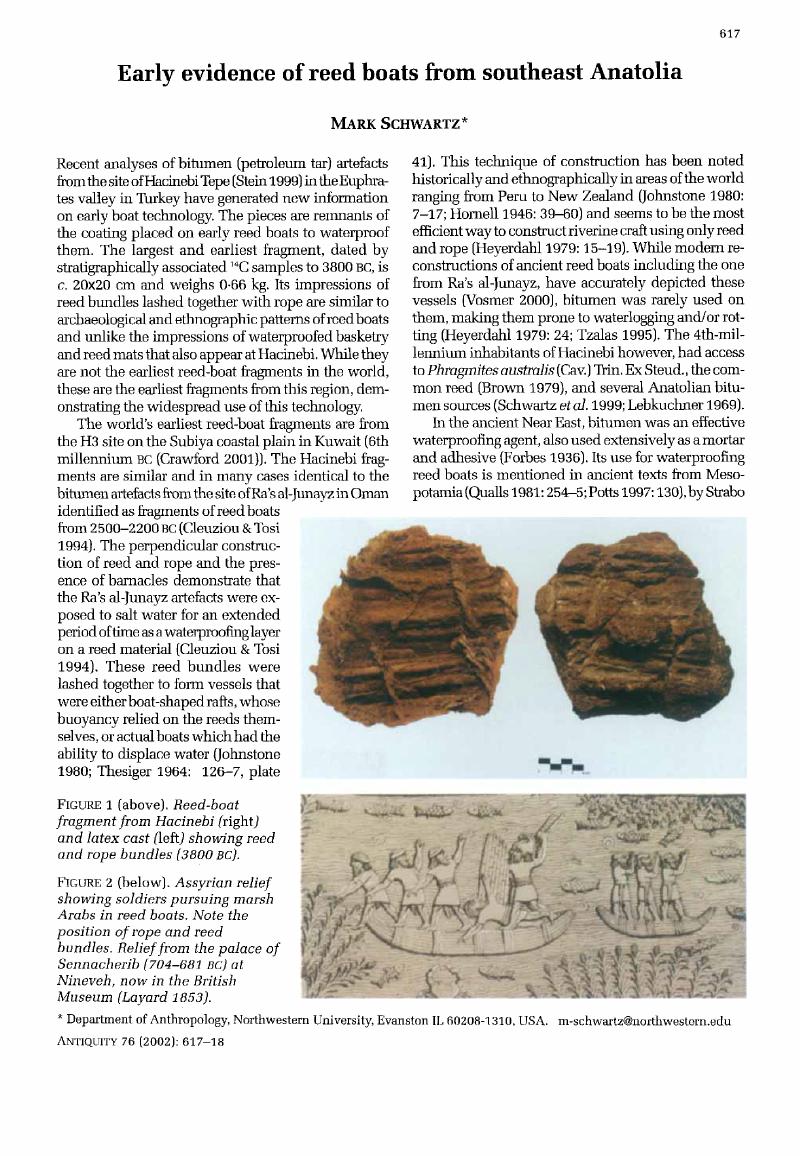Crossref Citations
This article has been cited by the following publications. This list is generated based on data provided by Crossref.
Carlton, James T.
2003.
Migrations and Dispersal of Marine Organisms.
p.
1.
Connan, Jacques
Carter, Robert
Crawford, Harriet
Tobey, Mark
Charrié‐Duhaut, Armelle
Jarvie, Dan
Albrecht, Pierre
and
Norman, Kirsty
2005.
A comparative geochemical study of bituminous boat remains from H3, As‐Sabiyah (Kuwait), and RJ‐2, Ra's al‐Jinz (Oman).
Arabian Archaeology and Epigraphy,
Vol. 16,
Issue. 1,
p.
21.
Carter, Robert
2006.
Boat remains and maritime trade in the Persian Gulf during the sixth and fifth millennia BC.
Antiquity,
Vol. 80,
Issue. 307,
p.
52.
Wendt, Carl J.
and
Cyphers, Ann
2008.
How the Olmec used bitumen in ancient Mesoamerica.
Journal of Anthropological Archaeology,
Vol. 27,
Issue. 2,
p.
175.
Schwartz, Mark
and
Hollander, David
2008.
Bulk stable carbon and deuterium isotope analyses of bitumen artifacts from Hacinebi Tepe, Turkey: reconstructing broad economic patterns of the Uruk expansion.
Journal of Archaeological Science,
Vol. 35,
Issue. 12,
p.
3144.
2011.
The Mediterranean Context of Early Greek History.
p.
256.
2012.
A Companion to the Archaeology of the Ancient Near East.
p.
1117.
Oron, Asaf
Galili, Ehud
Hadas, Gideon
and
Klein, Micha
2015.
Early Maritime Activity on the Dead Sea: Bitumen Harvesting and the Possible Use of Reed Watercraft.
Journal of Maritime Archaeology,
Vol. 10,
Issue. 1,
p.
65.
Schwartz, Mark
and
Hollander, David
2016.
The Uruk expansion as dynamic process: A reconstruction of Middle to Late Uruk exchange patterns from bulk stable isotope analyses of bitumen artifacts.
Journal of Archaeological Science: Reports,
Vol. 7,
Issue. ,
p.
884.
Byrd, Brian F.
and
Brandy, Paul
2023.
“And in Length of Days Understanding” (Job 12:12).
p.
1553.



